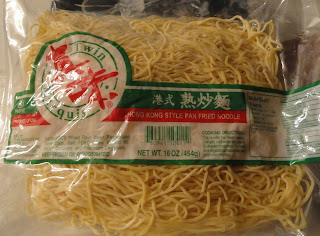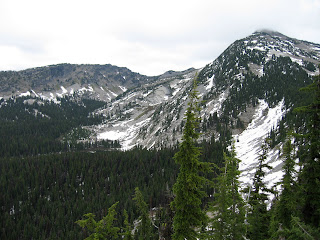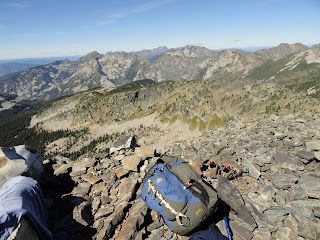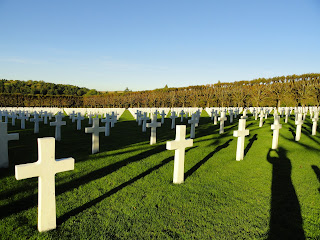This is a day late, but I was in no mood to write after cleaning up last night. I have been battling a migraine for about five days now, so I am even surprised I managed to cook dinner at all. At any rate, I did and it was fabulous, although it is not a meal that will be repeated at any sort of regular interval.
Why you ask? Well, listen to the menu.
Menu: Roast duck à l’Alsacienne with sausage and apple stuffing, potatoes, carrots, pearl onions, green beans, rice, salad and homemade whole wheat baguettes.
The recipe came from Julia Child of course, and she did not disappoint. I ended up substituting all the places where she said “add port” with liberal glugs of Calvados (just because), so perhaps it was more along the lines of “à la Normande” than à l’Alsacienne… regardless it was à la yum-ande. (I must be feeling better, I make jokey-joke).
I suppose if T and I aspired to be shaped like those rosy-cheeked, round-bottomed Alsatian farmers that are depicted on all the touristy trinkets we browsed over in Alsace, I would cook this every week. But as we aspire to more urban svelteness, and note I said “aspire,” we only eat like this every once in awhile. I think it is telling that this was one of the first times where T loved the meal but did NOT go back for seconds. Still, if you want to impress company, this would be the way to go.
I didn’t drink wine last night due to all the medication I have been taking for my head, but if I were to have imbibed, I would have chosen a light, crisp Alsatian white, probably a blend of some sort. JC recommended a red, but I think that would have been too much. It would have made the meal so heavy that we would have just tipped over where we sat. And speaking of “sat,” we broke Sunday tradition last night and sat in the den watching football ‘cuz we are down to the last few games of the season.
So how does is get made? I rinsed the duck and emptied all the stuff out from its cavity into a saucepan and added water to make stock. Don’t forget to skim the scum. I brined the duck for two hours in 4 quarts of water with ½ cup salt and ¼ cup sugar.
When it was done brining, I dried it out in a colander for a bit and then stuffed it with sausage, apples and leeks. JC doesn’t call for leeks, but I had one and it needed using. I made my own bulk sausage since I have a lot of ground pork lurking in the basement freezer, but you can certainly buy sausage just as easily. Making bulk sausage is easy though, only do it one or two days ahead of time so the flavors can blend. I used one pound of pork, and one teaspoon of the following: Salt, white pepper, finely minced garlic, sage and chopped fresh thyme. Mix it all up and let it sit. If you do it properly, your entire fridge will reek of garlic while it is “resting.”
How much to make? JC calls for ½ lb sausage and 4-5 apples, but I made my determination by peering into the ducky’s cavity and estimating. It seemed to be a pretty large cavity, so I used that excuse to throw in the entire pound of sausage. First I cooked the sausage. Once it was done, I took it out of the pan and let it drain. I peeled, quartered, cored and chopped three large apples while it was cooking. JC says to put the apples directly in to cook in the pork fat.

Here I shamefacedly admit that I ignored the Master’s counsel. I just couldn’t do it. There was a good ½ inch of glistening pork fat in the bottom of the pan, and as much as I love pork fat, and I do love pork fat, I just couldn’t bring myself to rob Mei Ping of the pleasure of pork drippings on her kibble. That is correct. It was not a matter of svelte-consciousness, but on behalf of poor, long-suffering Mei Ping. Anyway, I emptied about 75% of the fat into the “tasty treats for MP” bowl that sits at the back of my range and sautéed the apples in the rest, adding liberal glugs of Calvados when it started to look dry. JC says to add salt, pepper, sugar and cinnamon, but I only added salt and pepper to balance the sweet. Eventually I threw in a chopped leek and it gave off the most incredible smell, which unfortunate technical limitations do not allow me to share with you. You will have to suffice with this.

To keep things moist as the apples and leeks cooked, I added some stock and more Calvados. When the apples and leeks seemed done, I mixed in ALL of the sausage and stuffed it into ducky. Of course I misjudged the cavity size, so I saved the rest for the roasting pan. I had never trussed anything before, but as I have the “right” kind of roasting cord and a large supply of sewing needles (that haven’t seen much action recently, but that is for another post), I decided to give it a try.

So I’ll never be a surgeon, but there you have it. First time for everything. If you are interested, I used a size 22 tapestry needle and it worked great. Only thing was I inadvertently unthreaded my needle half way through and came uncomfortably close to doing what I always do when I unthread my needle, namely licking the thread and rethreading…So word to the wise, once the needle has made contact with the duck, do not pretend like you are stitching a pattern onto linen. Consider raw duck skin to be a non-saliva friendly sort of canvas. Ahem.
JC says to prick the duck’s breast, thighs and back to release the subcutaneous fat. Here I imagine Cantonese chefs fainting at the sheer horror of letting the essence of the duck dribble wastefully into the pan, but being neither Cantonese, nor a chef, I happily turned the fat release valve on to high and used my sewing needle to poke with abandon.
Heat the oven to 425 and brown the duck for 15 minutes. While this was happening, I chopped potatoes and carrots. I defrosted some pearl onions too, because they caramelize so nicely. After 15 minutes, reduce the oven to 350 and take the duck out briefly. Strew (and that is a JC word) them and the leftover stuffing around the duck and glug more Calvados and a little stock into the pan. It should look something like this.

Put it back in. She goes through the convolutions of turning the duck on its side every 30 minutes or so, as if it was going to develop pan-sores if left in one position for too long. I took Mei Ping on a walk instead, leaving T with strict instructions on what to do if he smelled burning fat. He didn’t. When I got back it smelled and looked terrific, so I helped it out by feeding it the rest of the Calvados in the bottle. After an hour, I took it out and took out 80% of the accumulated juices and let the fat start to separate. She says it is done when you prick the thigh and the juice that comes out is pink. I found that it is awfully hard to determine pink against the dark brown of duck skin, so I guestimated. I probably left it in a tad too long, but it was still edible.
This is what it looked like when it came out.
Cut the threads, empty the stuffing (tricky when the cavity is so long and narrow and the darned thing is so steamy hot) and then you have something like this.
While the meat is resting, make the sauce. Take the pan drippings, minus most the fat and put it in a pan and heat to simmer. To thicken, you can start it with a roux using some of said fat. Adjust the taste with salt, pepper and Calvados, if you have any left, and add the rest of the duck stock on the stove (unless you have something else to make with duck stock in the next few days).
I have to say that this was just beyond words fabulous. But come on. Duck AND pork fat together? I mean, how could you go wrong? I think I liked the stuffing and veggies with the pan juices even more than the duck itself. And eaten with still warm, homemade bread (ooh la), the whole meal was just beyond outrageous.
Svelte? Who, us? Mmm, don’t think so.







































































